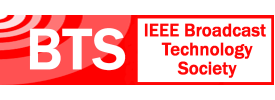- About
- Members
- Sponsors
- Subcommittees
- Technical Documents
- News
- Events
- Spotlight ATSC 3.0
- Contact Us
- Member Login
- Member Meetings
- Advanced Search
Search Site
Member Links
- About
- Members
- Sponsors
- Subcommittees
- Technical Documents
- News
- Events
- Spotlight ATSC 3.0
- Contact Us
- Member Login
- Member Meetings
- Advanced Search
ATSC Hosts Mobile DTV Seminar – Press Release
Posted on February 3, 2010 in Press Releases
Committee Continues Education on Mobile DTV
WASHINGTON, February 3, 2010 – Helping key stakeholders prepare for the era of digital television (DTV) broadcasting to mobile and handheld devices, the Advanced Television Systems Committee (ATSC) hosted an informative Mobile DTV technology conference today.
This day-long event provided attendees with information about Mobile DTV technology and related industry activities, underscoring the momentum behind the new ATSC Mobile DTV Standard. The morning session’s tutorials focused on details of the ATSC Mobile DTV Standard, while the afternoon panels centered on strategies for broadcast facility implementation and operation. The event, held at Hogan & Hartson’s Fulbright Conference Center, was followed by an informal networking reception.
After welcoming remarks by ATSC President Mark Richer, the program opened with a keynote address from Sterling Davis, Cox Media Group, entitled “Broadcasters Move Forward with Mobile DTV.”
“It’s gratifying that broadcasters, in partnership with device makers and equipment suppliers, have stepped up to the plate in a cohesive way in order to help create a new business opportunity for us all,” said Davis, a member of the ATSC board of directors. “Consumers will appreciate the ability to view television everywhere. Every part of the eco system will have additional products to sell.”
Additional speakers were Mark Aitken, Sinclair Broadcast Group; Art Allison, NAB; Wayne Bretl, LG Electronics; Rich Chernock, Triveni Digital; Brett Jenkins, ION Media; Mike Bergman, Kenwood; Anne Schelle, OMVC; Jay Adrick, Harris; Peter Mataga, Roundbox; Dave Benco, Rohde & Schwarz; Robin Wilson, NagraVision; and Kerry Cozad, Dielectric.
“As the broadcast industry is preparing to launch ATSC Mobile DTV services, it is essential that station engineers become familiar with the A/153 standard, the underlying technology and the system architecture that will impact their digital television plant,” said session moderator Jay Adrick, Harris.
“Common standards are absolutely essential when we have so many players involved whether you’re a broadcaster or a consumer equipment manufacturer. It’s the thing that allows for interoperability and flexibility even as we compete at the content level,” added session moderator Jim Kutzner, PBS.
The meeting was sponsored by ATSC member companies including Harris; IEEE BTS; LG Electronics; Rohde & Schwarz; RRD USA; Thomson; Meintel, Sgrignoli, & Wallace and Roundbox.
Selected presentations from the seminar will be publicly available online within the next few days. Please visit atscnextgentv.vp77wsn4-liquidwebsites.com/seminars/mobile10.php
The Advanced Television Systems Committee is an international, non-profit organization developing voluntary standards for digital television. The ATSC member organizations represent the broadcast, broadcast equipment, motion picture, consumer electronics, computer, cable, satellite, and semiconductor industries. ATSC creates and fosters implementation of voluntary Standards and Recommended Practices to advance terrestrial digital television broadcasting, and to facilitate interoperability with other media.
– END –
Contact
Lindsay Shelton-Gross, ATSC (202) 872-9160, lsheltongross@atsc.org
Posted in Press Releases
News Categories
News Archives
Subscribe
Subscribe to The Standard, our monthly newsletter. Learn More
Join ATSC
ATSC is a membership organization with both voting and observer categories. Voting members include corporations, nonprofit organizations, and government entities, and they participate actively in the work of ATSC. Observers are individuals or entities not eligible to be a voting member.
Subscribe to our Newsletter
Subscribe to The Standard, our monthly newsletter, to stay up-to-date with ATSC news and events around the world.
Site Links
Contact Us
Advanced Television Systems Committee, Inc.
1300 I Street NW, Suite 400E
Washington, DC 20005
Do you have questions about ATSC?
About ATSC
The Advanced Television Systems Committee, Inc., is an international, non-profit organization developing voluntary standards and recommended practices for digital terrestrial broadcasting. ATSC member organizations represent the broadcast, broadcast equipment, motion picture, consumer electronics, computer, cable, satellite, and semiconductor industries. ATSC also develops digital terrestrial broadcasting implementation strategies and supports educational activities on ATSC standards.
© 2025 ATSC




































